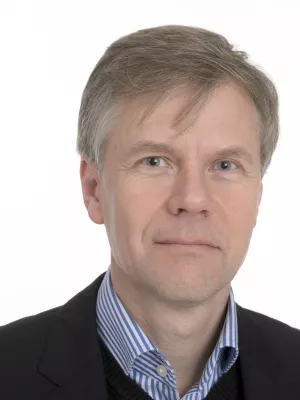
Crister Ceberg
Professor

A stochastic model for subcellular dosimetry in boron neutron capture therapy
Författare
Summary, in English
The therapeutic effectiveness of boron neutron capture therapy is highly dependent on the microscopic distribution of the administered boron compound. Two boron compounds with different uptake mechanisms in the tumour cells may thus cause effects of different degrees even if the macroscopic boron concentrations in the tumour tissue are the same. This difference is normally expressed quantitatively by the so-called relative local efficiency (RLE). In this work, a stochastic model for the subcellular dosimetry has been developed. This model can be used to calculate the probability for an energy deposition above a certain threshold level in the cell nucleus due to a single neutron capture reaction. If a threshold cell-kill function is assumed, and if the dose is low enough that multiple energy depositions are rare, the model can also be applied to calculations of the survival probability for a cell population. Subcellular boron distributions in rats carrying RG 2 rat gliomas were measured by subcellular fractionation after administration of two different boron compounds: a sulphydryl boron hydride (BSH) and a boronated porphyrin (BOPP). Based on these data, the RLE factors were then calculated for these compounds using the stochastic model.
Avdelning/ar
- Medicinsk strålningsfysik, Lund
- Tumörmikromiljö
- Neurokirurgi
Publiceringsår
1995
Språk
Engelska
Sidor
1819-1830
Publikation/Tidskrift/Serie
Physics in Medicine and Biology
Volym
40
Issue
11
Dokumenttyp
Artikel i tidskrift
Förlag
IOP Publishing
Ämne
- Radiology, Nuclear Medicine and Medical Imaging
Status
Published
ISBN/ISSN/Övrigt
- ISSN: 1361-6560

